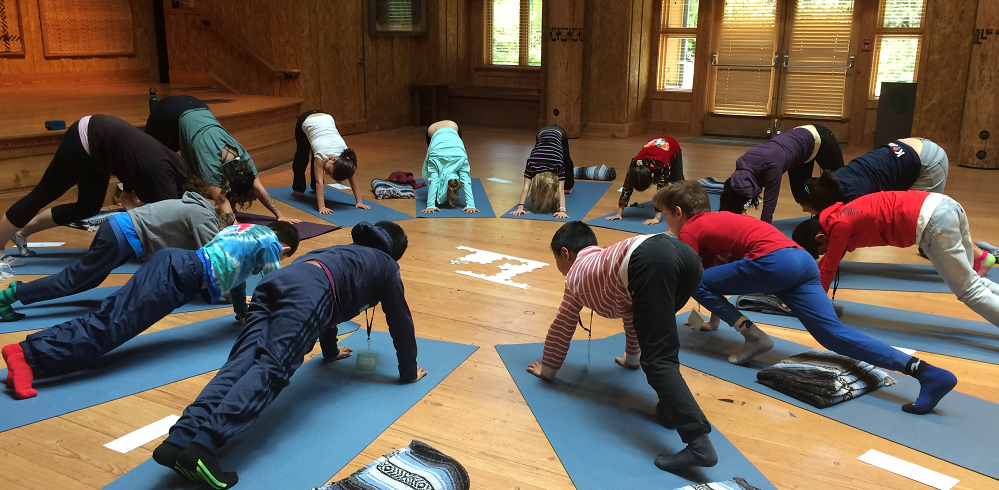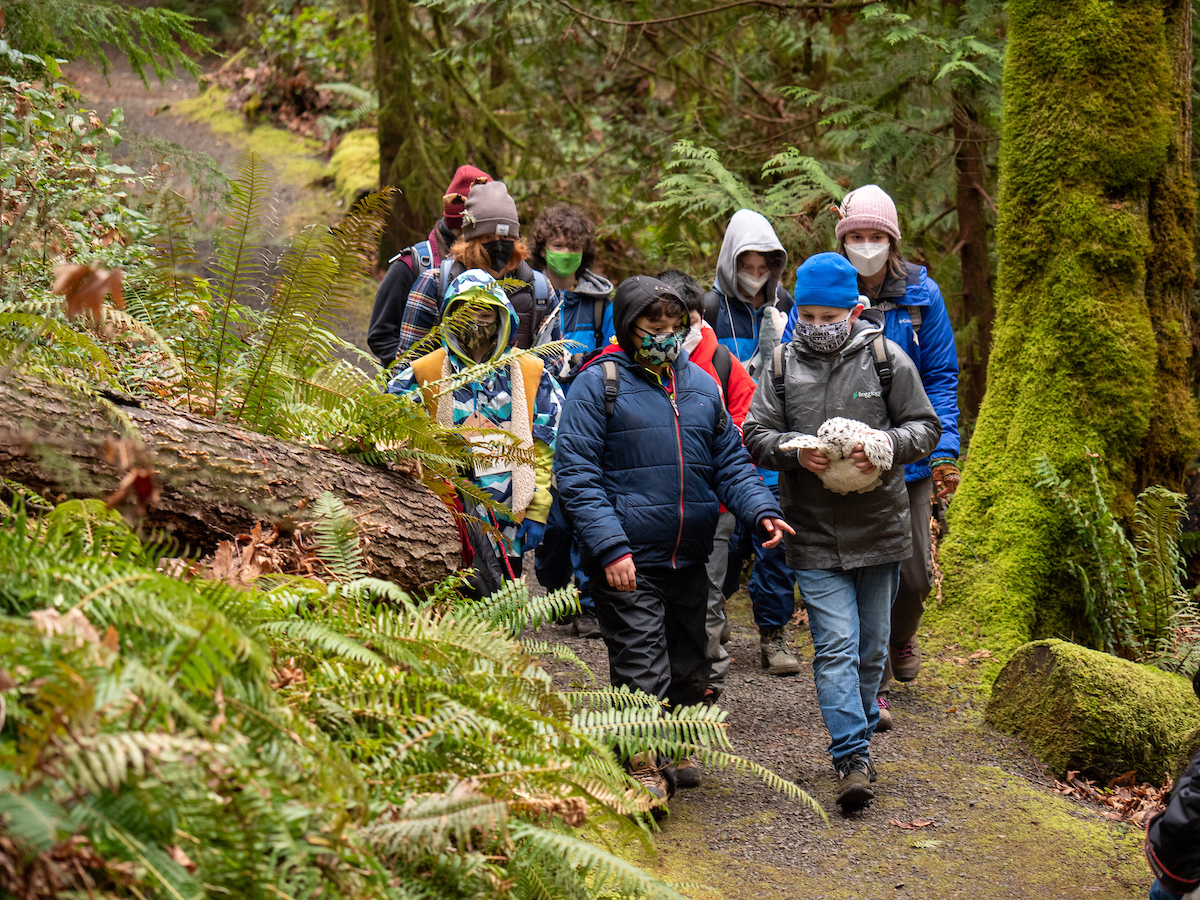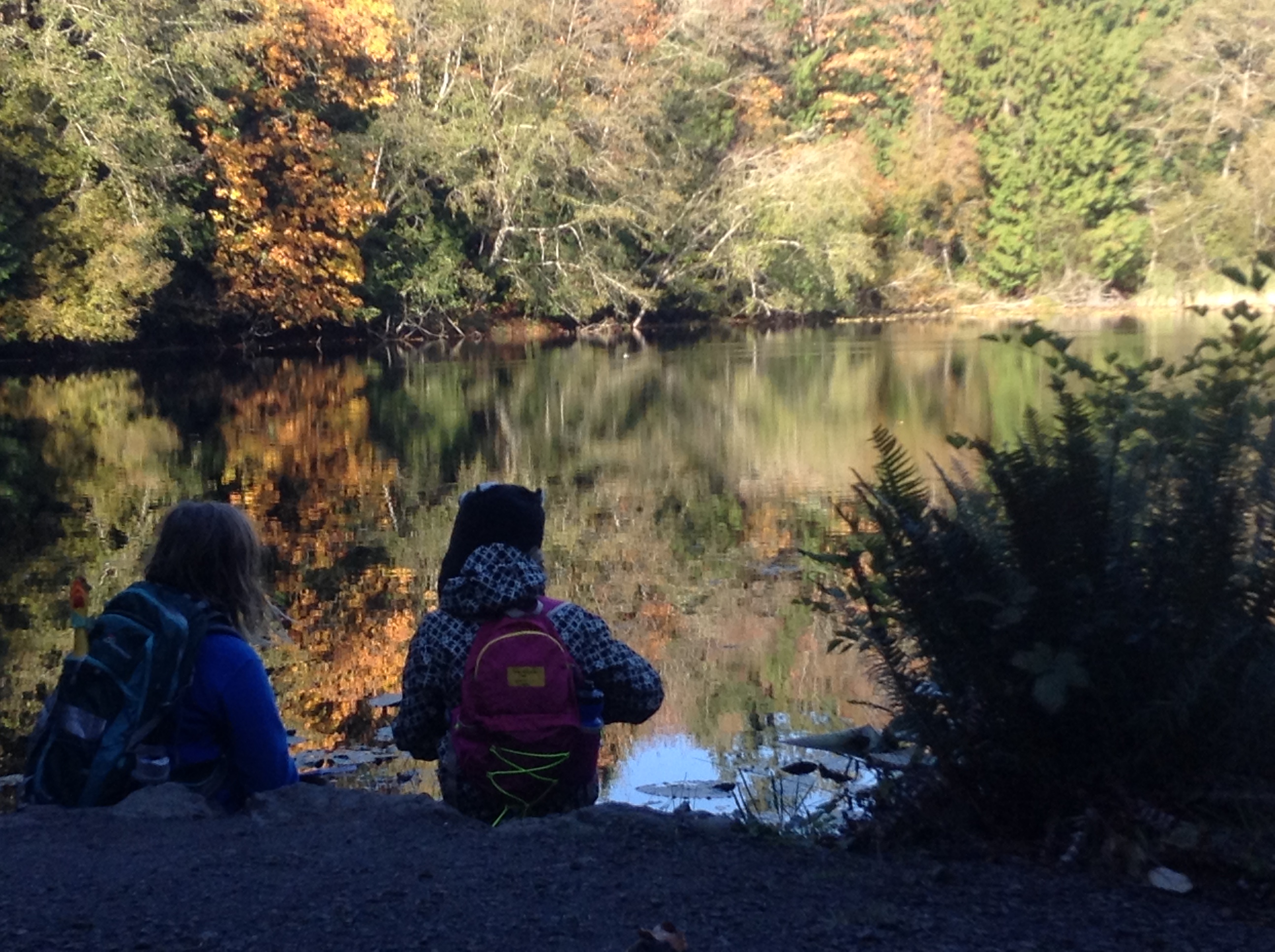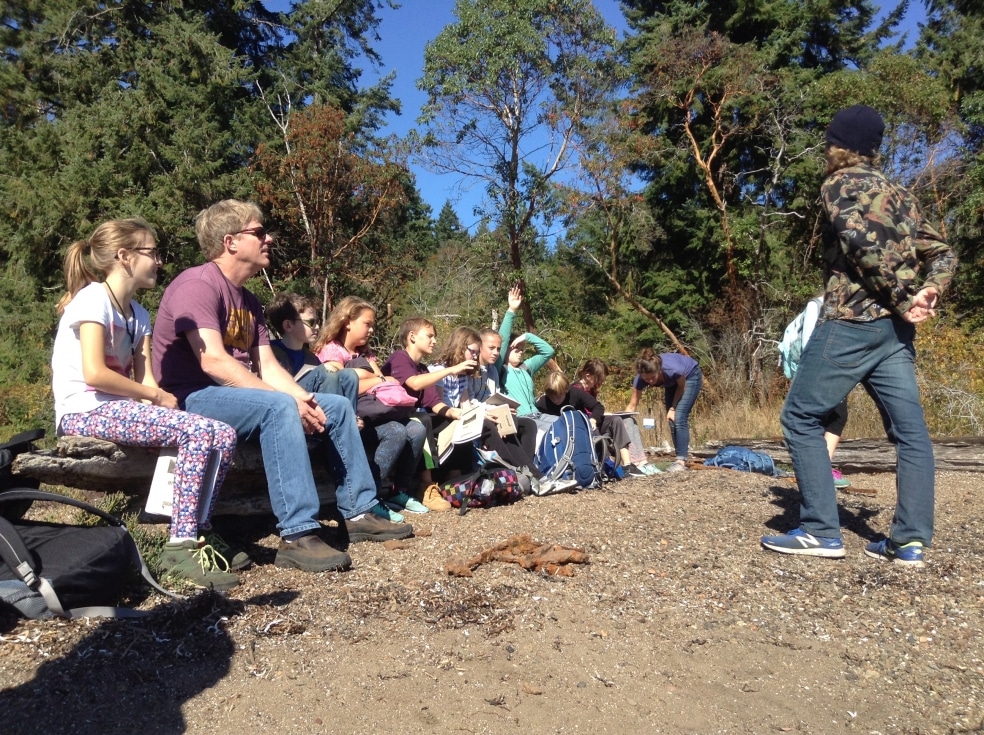IslandWood graduate students were featured in this recent Seattle Times article about House Bill 2078
Author: Tamar Kupiec
The fourth graders from Open Window School were lying on the floor of the Great Hall, perfectly quiet except for the occasional yawn. They were not getting ready for a nap. They were just really relaxed. Gabriela Ayala-Cañizares, a visiting yoga teacher and artist, had just led the students in a session on yoga and mindfulness. The crow pose, in which the knees rest on the upper arms and the entire body balances on the hands, came naturally to these limber 10-year-olds, but quieting the mind, especially after a stimulating day in the School Overnight Program (SOP), required effort. The students had listened intently to the words of their teacher and observed the subtle working of their bodies and minds with detachment and discipline. And now they rested.
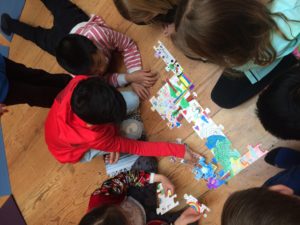
Students assemble a puzzle representing their communities.
Gabriela teaches students to practice mindfulness so that they might have the awareness and control to “stop and press pause” when faced with heated emotions or stressful situations. The session focused on awareness of the breath and the engagement of the senses as a means of creating calm and connecting to the present moment. Our thoughts are “time travelers,” moving between past and future, Gabriela explained to the students. They are “jurors,” making judgements and talking excessively, perhaps even saying you can’t do something when you really can. The breath and the senses, however, are always in the present, and by directing our attention to them, we can filter out distracting, and potentially self-defeating, thoughts. She instructed the students to observe each breath—the expansion of their chests, the subtle warmth beneath the nostrils, and when covering their ears, sounds like those of wind and water.
In this state of mind, impulses are checked and good decisions are made. And with these successes come growing self-confidence and a deeper understanding of the impact we have on others. As with any skill, be it
soccer or playing guitar, it takes practice. Gabriela trusts that, short as it is, this initial exposure offers a powerful beginning. “The real process of learning is discovering on your own,” she says.
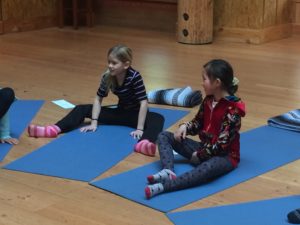
Students resting between yoga poses.
Most weeks of the year, IslandWood invites artists like Gabriela to take part in its Artist-in-Residence program. Artists provide professional development to graduate student instructors and work directly with SOP students, offering expertise and experiences that complement the SOP curriculum. The techniques she introduced in the context of mindfulness can support the close observation, unbiased and precise, that is the starting point for any scientific investigation at IslandWood. And the importance of making deliberate choices, rather than reacting quickly, is a foundation of the stewardship practiced here, of tending to the self, others, and the world. The effects were immediately apparent for graduate student instructor, Marlie Somers, who noticed her “students being more respectful of sharing airtime while speaking after the session.”
Gabriela gently roused the students and brought out a paper bag. “Candy!” they called out. But alas, Gabriela, having plunged her hand into a paper bag, pulled out a cranberry instead. Disappointment turned quickly to captivation, as she guided the students through an exercise in mindfulness, tracing the origins of this cranberry beginning with the soil, sun, and water which nourished it, to its harvest, transport, and ultimate destination as a packaged product on a store shelf. The students noted its rough texture, sniffed it, popped it, and finally ate it, savoring the combination of sweetness and tang and imagining its route through our bodies and back into the earth. “We are in communion with what we eat,” she said, and by extension, with the earth.
The workshop concluded with a collective art project—the creation of a puzzle, each student illustrating one piece with their vision of community. Rainbows, trees, hearts, spider webs, a canoe, and clasped hands were drawn to represent nature, family, happiness, and gratitude. One young artist depicted a man cutting down a tree and dreaming of the house he would build. Instead of leaves and branches, his tree has a head of lettuce; in the corner, a giant mouth prepares to take a bite. “Nature provides a home and food,” he explained. As they finished their drawings, the students assembled the puzzle on the floor in the center of the Great Hall, the placement of each contribution warranting discussion and experimentation. Taken individually the pieces were touching. Taken together they made a compelling and complex statement on the connections between our human and natural communities.

